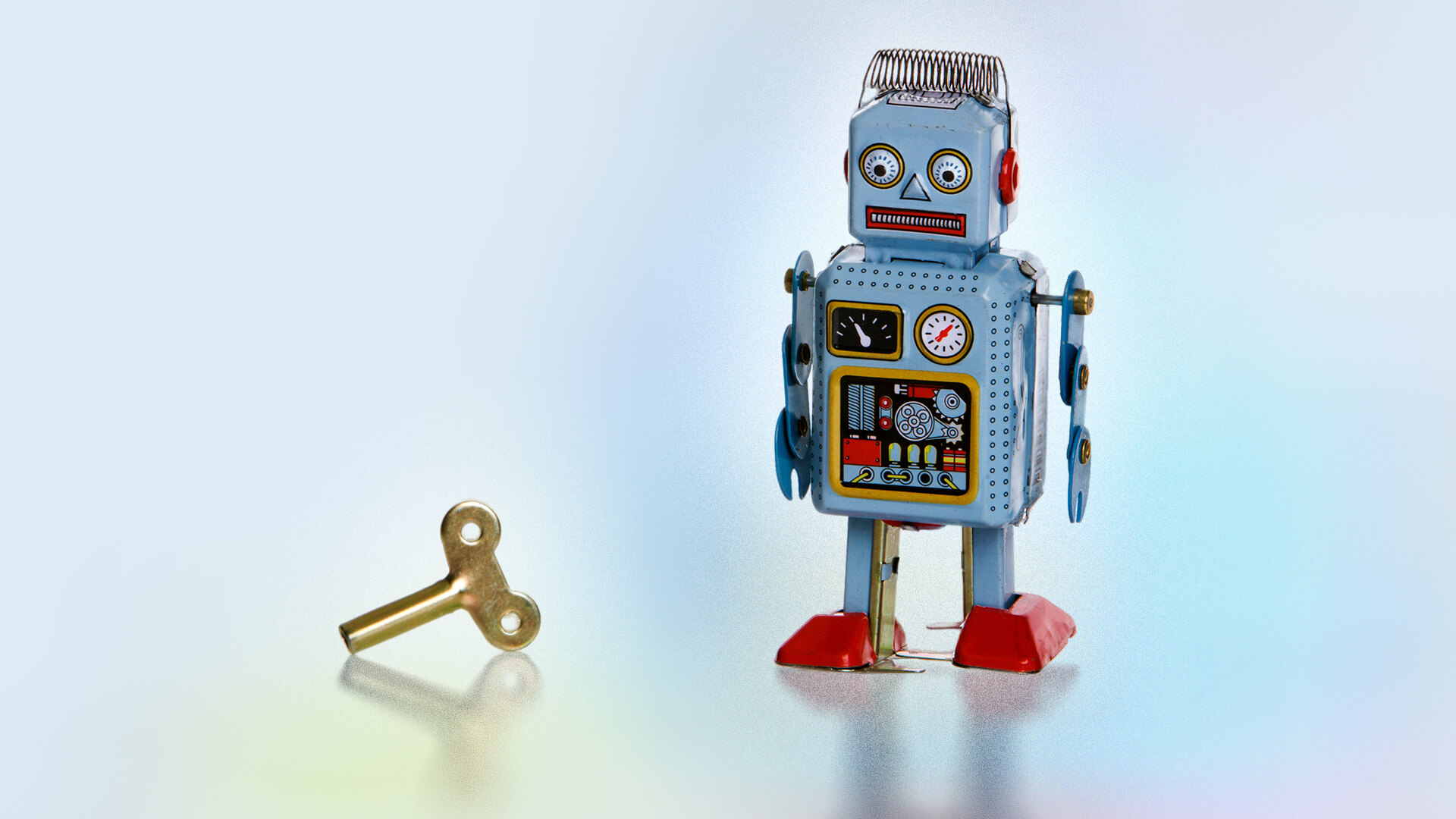One of the most eyebrow-raising e-mails we received last year was a pitch to buy shares in airline companies. Why?
The emergence of a new group of weight loss drugs1, technical name GLP-1s. A cure for obesity would cram more of us into each plane, unleashing a wave of higher profitability. Waistlines down, profits up, share prices take off…
If this seems hyperbolic, it was only the tip of the iceberg in a year dominated by innovative technologies. Key innovation set to disrupt the two largest sectors we are invested in: healthcare and information technology.
In healthcare, companies producing these GLP-1 drugs, such as Novo Nordisk, surged in 2023. Meanwhile the broader healthcare sector struggled, finishing the year down 1.8%. To some extent, this makes sense. Obesity costs the US healthcare system around $170bn a year, and many business models rely on treating its effects. For example, annual knee replacement surgeries in the US are predicted to grow 673% to 3.5 million procedures by 20302. If future populations become slimmer, perhaps we won’t need so many new knees?
Within the information technology sector, all the talk in 2023 was about Generative Artificial Intelligence (Gen AI). Virtually overnight, feverous news articles proclaimed that ChatGPT could be used by everyone from directors writing complex reports to children hitting homework deadlines.
Chegg, a US education company that provides online tutoring and help with homework, was among the first to voice concerns. Its share price fell 48% when it admitted that students were increasingly turning to ChatGPT rather than their products3. The information technology sector, home to many companies involved in Gen AI, was up 46.5%.
Problems in need of solutions
It’s easy to fall into the trap of being anxious about the impact of disruptive innovations, particularly when change happens this quickly. We’d argue that there is cause for optimism. These new technologies are both exciting, as they present us with investment opportunities to grow clients’ capital, and necessary, when seen through the lens of the demographic challenges the world is facing.
Fertility rates are falling in many countries4. In South Korea, prams for dogs now outsell prams for babies5. In the US, nearly 95% of older adults are living with at least one chronic health condition, while around 80% are contending with two or more6. The cost of treating these illnesses runs into trillions of dollars every year, putting immense stress on healthcare systems and the governments that fund them. Weight loss drugs could help address the health problems related to ageing populations.
The flipside to an ageing population, is a shrinking workforce, with worrying falls of between 10% and 67% being predicted7. Back to South Korea, The New York Times suggested the country is facing a faster population decline than Europe experienced in the Middle Ages as a result of the Black Death!8

And yet, by far the biggest fear expressed about Gen AI is whether jobs will be lost. Some sectors will undoubtedly be affected, particularly those where manual tasks are more easily replaced by technology. But the concerns must be seen in context. Companies across the world are already struggling to fill vacancies, so Gen AI causing mass unemployment seems unlikely. Half of German firms, for example, have reported severe labour shortages, which is costing the country around €90bn-a-year9. China’s workforce is set to shrink by 7.9m a year from now until 203010.
Gen AI could also help with the world’s energy demands. Researchers at Microsoft and the Pacific Northwest National Laboratory recently used the technology to identify a substance that could replace lithium (an expensive and scarce substance) in batteries. Using Gen AI, they narrowed down 32 million potential inorganic candidates to 18 – all within the space of a week11. Using traditional methods, this process could have taken more than two decades!
Move fast and break things?12
The numbers mentioned earlier suggest that we don’t have enough people to carry out the jobs required today. We also only have a rough idea of what types of jobs will be created over the coming decades. After all, how many people back in the 1970s would have predicted the need for mobile phone designers or TikTok influencers?
However, applying Zuckerberg’s mantra to the adoption of Gen AI risks causing social upheaval. The World Economic Forum estimates that 44% of workers’ skills will be disrupted in the next five years, with six in 10 requiring training before 202713.
We held our latest stewardship roundtables with clients in November of last year, where it was clear that clients share our concern that companies should take employees with them on their Gen AI journeys. We focus on this in our engagement work with companies. For example, Accenture, the consultant and IT outsourcer, delivered 40 million training hours during 2023, at a cost of $1.1bn. It’s been proactively defining new skills and roles, while staff numbers involved in data and Gen AI practice are set to double to 80,000 over three years14.
How we pick companies
It’s very difficult to accurately predict the ultimate winners when a disruptive technology arrives, so we don’t attempt to. Instead, we focus on the longer-term big shifts that we can forecast with a degree of confidence.
Within healthcare we avoid picking which drug manufacturers are likely to emerge victorious. We focus instead on companies that help improve care delivery and reduce cost. Intuitive Surgical is a pioneer in robotic-assisted surgery. Its da Vinci system can reduce the time patients spend recovering from surgery in hospital from 4 days to 1. UnitedHealth’s efforts to increase home visits has resulted in 14% lower hospital admissions.
We take a similar approach with Gen AI. We’re not invested in the headline-grabbing winners. But we are invested in the companies creating the technology required: Synopsys, which supplies software to the world’s leading semiconductor producers, and Amphenol, a major producer of electronic and fibre optic connectors. If Gen AI is the latest gold rush, then these are the picks and shovels, with – crucially – multiple, durable drivers to their growth.
We take comfort from the fact that companies across the portfolio have strong balance sheets. They have a track record of navigating troubled times, such as the global financial crisis and Covid-19 pandemic. These names are identified through rigorous, bottom-up stock picking. Perhaps most importantly, valuations are monitored closely for any warning signs of exuberance.
Change is the only constant15
Change is inevitable – the speed of change currently taking place has taken many by surprise. A cold towel to the head should reassure that Gen AI is unlikely to render populations unemployed. Similarly, it is yet to be proven that people will withstand the side effects of GLP-1 drugs long enough to put away the scales for good.
As we look forward, we ponder that the greater risk could lie in resisting change. Failure to adapt at the company level can lead to failure of the company. Failure to embrace these new technologies more broadly, given demographic pressures, could stymie productivity, limit growth, and worsen the fiscal pressures on governments worldwide. That’s why we will continue to ferret out companies embracing change, and enabling the innovative solutions the world needs.
- GLP-1 drugs were initially approved to treat type 2 diabetes. They help the body make more insulin, reduce the amount of sugar created by the liver, and slow down the digestion of food. However, their popularity soared because of their effectiveness in reducing appetites, meaning they could help people lose weight. ↩︎
- https://www.thecenteroregon.com/medical-blog/knee-replacement-surgery-by-the-numbers/ ↩︎
- https://www.cnbc.com/2023/05/02/chegg-drops-more-than-40percent-after-saying-chatgpt-is-killing-its-business.html ↩︎
- https://www.veritasinvestment.co.uk/views/robots-are-our-friends/ ↩︎
- https://www.koreaherald.com/view.php?ud=20231225000083 ↩︎
- https://www.ncoa.org/article/get-the-facts-on-healthy-aging ↩︎
- https://www.oecd-ilibrary.org/sites/d9aef235-en/index.html?itemId=/content/component/d9aef235-en#:~:text=The%20projected%20working%2Dage%20population,the%20Slovak%20Republic%20and%20Spain. ↩︎
- Opinion | Is South Korea Disappearing? – The New York Times (nytimes.com) ↩︎
- https://www.reuters.com/markets/europe/half-german-companies-face-labour-shortages-despite-economic-stagnation-survey-2023-11-29/ ↩︎
- Capital Economics ↩︎
- https://www.reuters.com/markets/europe/half-german-companies-face-labour-shortages-despite-economic-stagnation-survey-2023-11-29/ ↩︎
- Mark Zuckerberg ↩︎
- https://www.reuters.com/markets/europe/half-german-companies-face-labour-shortages-despite-economic-stagnation-survey-2023-11-29/ ↩︎
- https://www.accenture.com/content/dam/accenture/final/capabilities/corporate-functions/marketing-and-communications/marketing—communications/document/Accenture-Fiscal-2023-Annual-Report.pdf#zoom=50 ↩︎
- https://www.veritasinvestment.co.uk/views/change-is-the-only-constant/ ↩︎
The above review has been issued by Veritas Investment Partners (UK) Limited, which is authorised and regulated by the Financial Conduct Authority. This is not a financial promotion, this document is for information only. The opinions expressed above are solely those of Veritas Investment Partners (UK) Limited and do not constitute an offer or solicitation to invest. The value of investments and the income from them may fluctuate and are not guaranteed, and investors may not get back the whole amount they have invested.
 Catriona Hoare
Catriona Hoare 